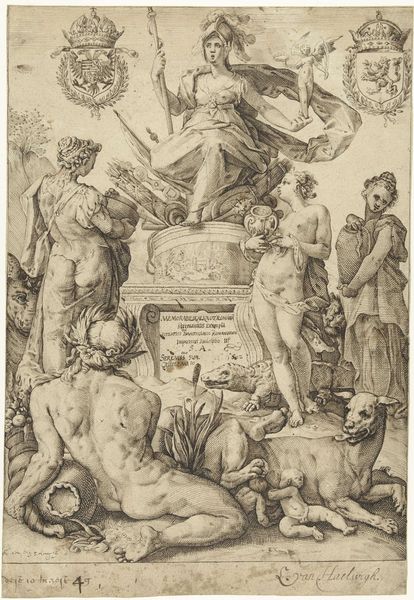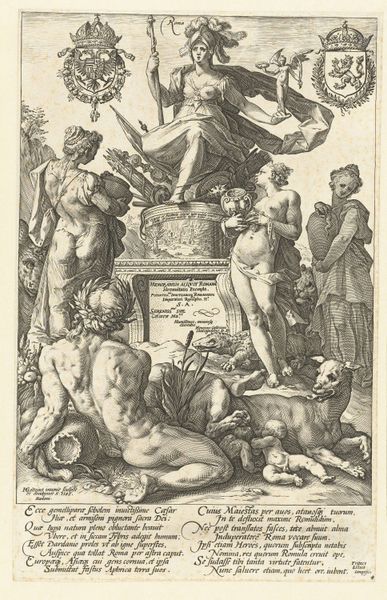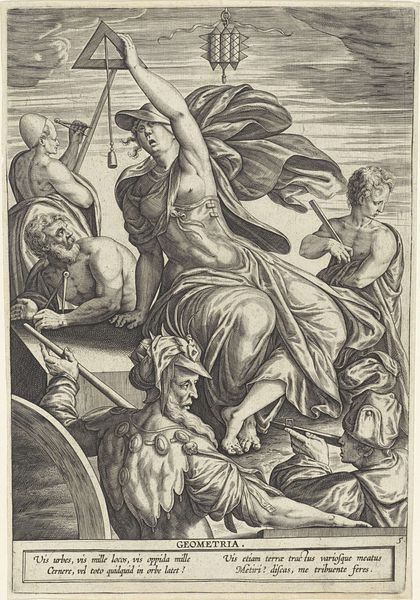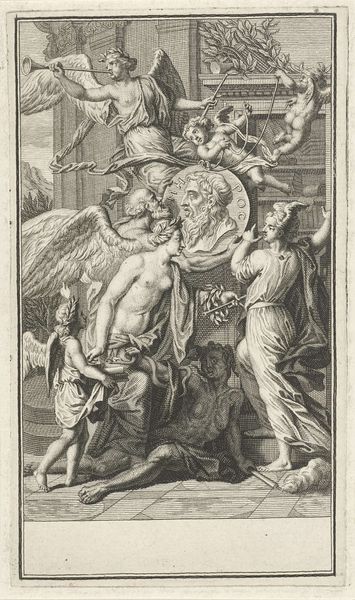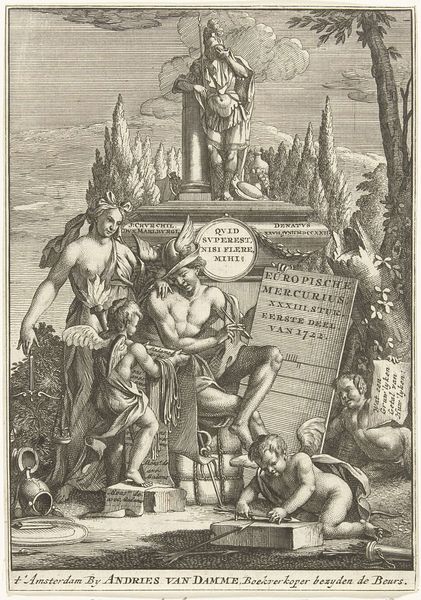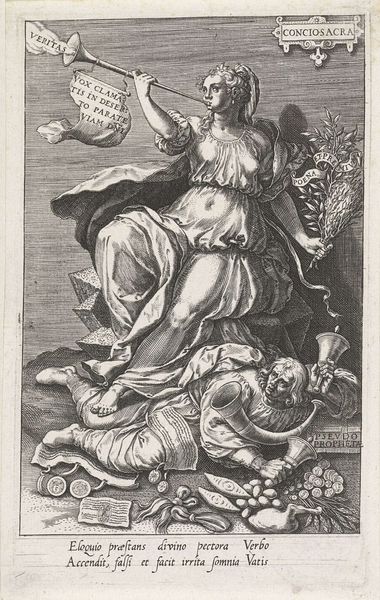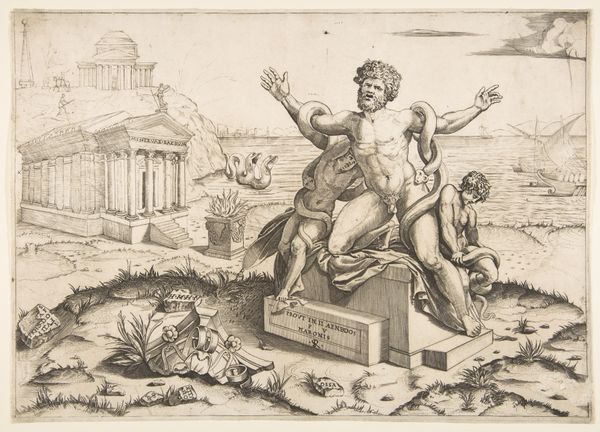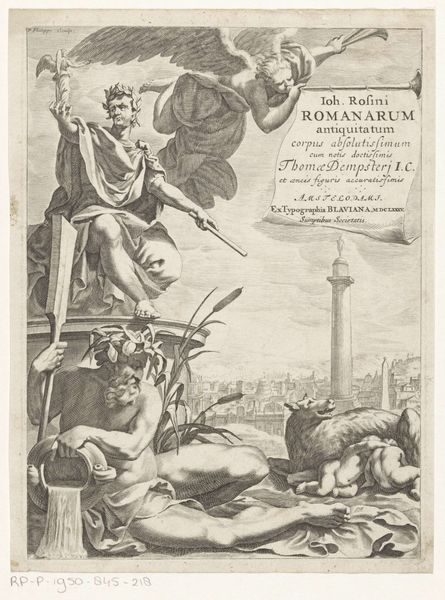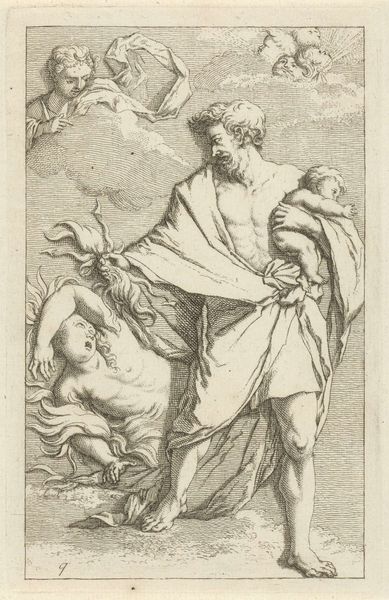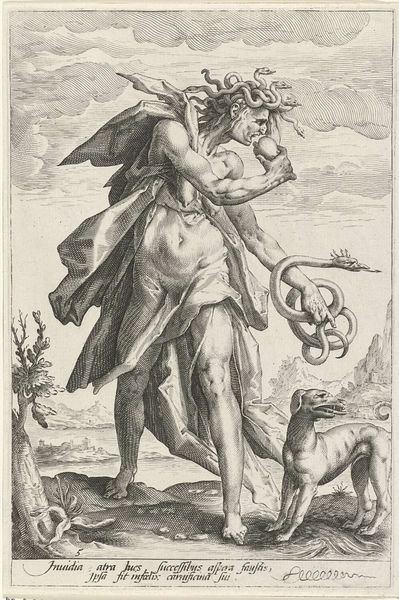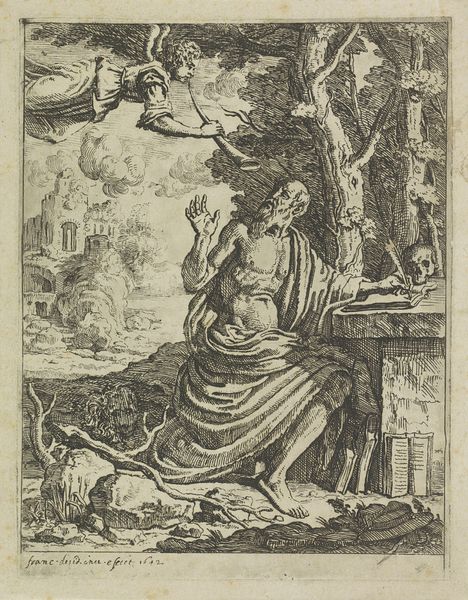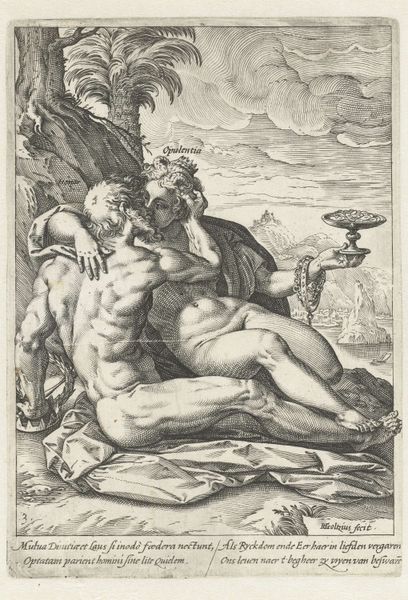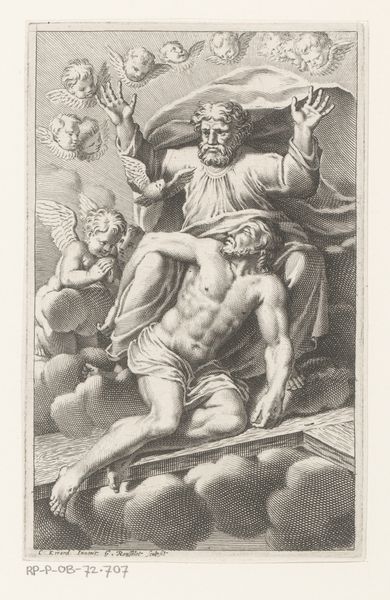
Dimensions: height 244 mm, width 199 mm
Copyright: Rijks Museum: Open Domain
Curator: Pieter van der Heyden created this engraving, titled "The Sacrifice of Isaac," in 1552. It's currently housed at the Rijksmuseum. Editor: It strikes me immediately as quite dramatic, all sharp lines and intense musculature. The dynamism of the figures, the swirling drapery—it's incredibly theatrical. Curator: Absolutely. It exemplifies the mannerist style popular at the time, but also provides a fascinating view into the means of print production during the mid-16th century. Engravings like this were essential for disseminating imagery widely, almost like a proto-photocopy, but each was skillfully created through painstaking labor and intricate craftsmanship using metal plates. Editor: Notice how Van der Heyden uses dense hatching to build form and create a sense of depth. Look at Abraham's arms; see the careful use of swelling lines. It’s remarkable. And the contrast between the solidity of Abraham and Isaac and the ethereality of the angels gives a really powerful visual punch. Curator: And we see here how religious narratives were visualized and consumed, becoming tools of both propaganda and education. What were the prevalent interpretations of the biblical episode then, and how did their visual representations contribute to popular piety? The social context is so important for understanding the meaning behind the image. The material—metal, engraving tools—became integral to a narrative's cultural power. Editor: It's so captivating to observe how the composition, from Abraham's commanding pose to the angels in dramatic freefall, all reinforces the overwhelming tension. But it is visually stunning. Van der Heyden masterfully creates that palpable moment of anticipation, just before the averted disaster. Curator: The success of such prints was heavily reliant on both the skill of the engraver and the demand within the growing print market. Religious workshops were thriving—who produced this print, and who might have consumed it? These questions, viewed through the lens of social and economic practices, shed valuable light on 16th-century European life. Editor: It is a master class in line work. Curator: Precisely.
Comments
No comments
Be the first to comment and join the conversation on the ultimate creative platform.
